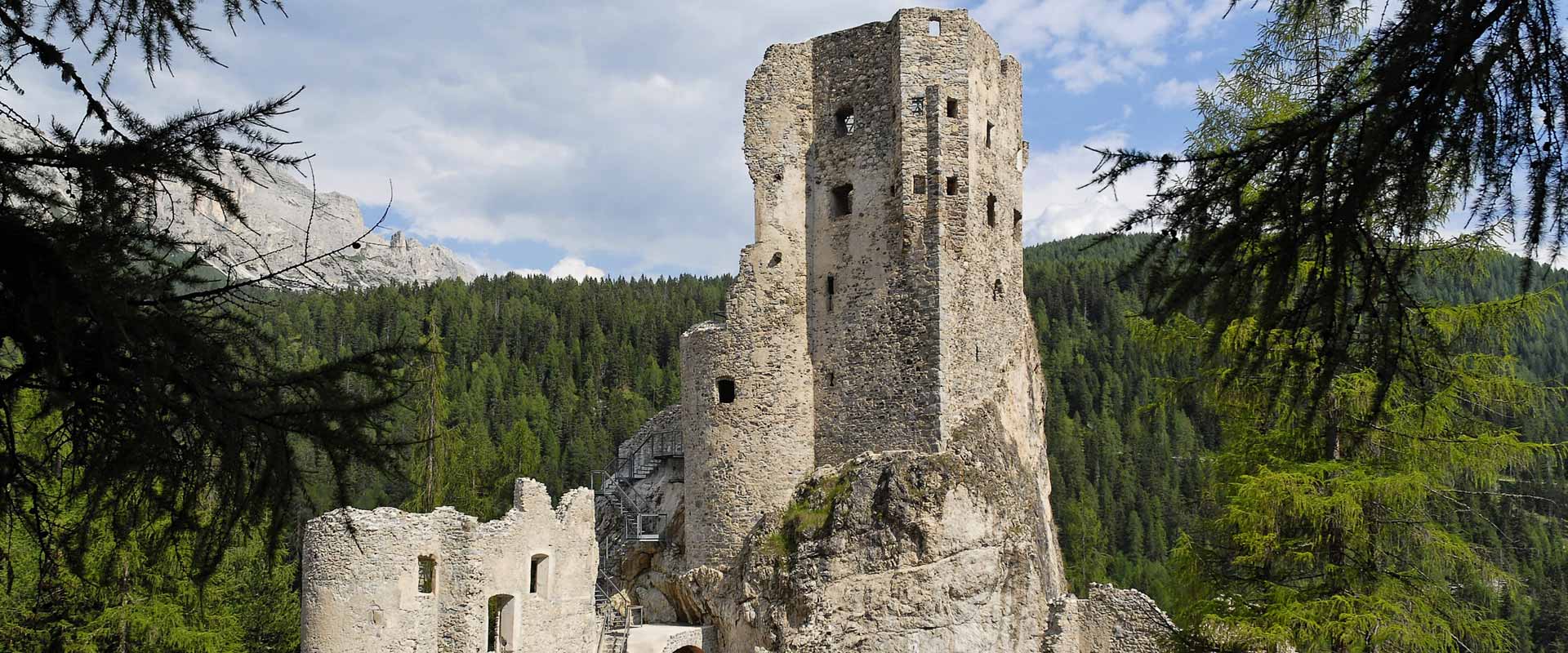- TIPS
- SUMMER
- WINTER
- HOSPITALITY
- HISTORY AND MUSEUMS
- INFO
- VIDEO
- DELICIOUS APP

Photo by Roberto Casanova
- TIPS
- SUMMER
- WINTER
- HOSPITALITY
- HISTORY AND MUSEUMS
- INFO
- VIDEO
- DELICIOUS APP

Photo by Roberto Casanova
In the Lagazuoi and 5 Torri area, we see the signs of history. Beyond the Falzarego pass rises the Castle of Andraz, one of the most ancient castles in the Dolomites.
It was built in 1027 over a great landslide, to defend the foundries and the road along which the iron dug out of the mines of Mount Pore travelled.
The raw material underwent an initial working process in the neighbouring valleys. The quality of the iron was excellent and was used for manufacturing fine swords, which were exported all over Europe.
They were even used in Scotland during the rebellions of the 13th century, as narrated in the film "Braveheart", starring Mel Gibson.
Recently restored and improved with state of the art methods, the site blends extremely well into the surrounding landscape, enriching the atmosphere with echoes of past times.
For proces and timetables: www.castellodiandraz.it
Next to the Andraz castle there is La Baita Restaurant: the dishes are prepared using mainly zero-mile food products from the Belluno area such as Lamon beans and barley.
Nicholas was born in Kues (Latinized as "Cusa"), a small town on the Moselle, near Trier in southwestern Germany.
He was considered one of the most cultured personalities of his time and was a tireless reformer of custom and morality.
He was very active in the bosom of the Church and even headed a delegation that advocated the unification of the Catholic and Orthodox Churches in Constantinople.
In 1450 he was named Bishop of Brixen. Fearing poison death, he withdrew behind the walls of Andraz. Indeed, his numerous enemies were secretly plotting. Above all, the Duke Siegmund of Tyrol and Archduke of Austria, who not only wanted to banish the Prince-Bishop from his country but was also the protector of Verena von Stuben, the Abbess of the Sonnenburg Monastery. An antagonist of the bishop in terms of feudal rights, she was against any reform of cloistered customs.
The bishop also collided with the Neustift monastery, which claimed to have been the owner of the iron mines since 1177, thanks to a donation from Frederick I, the Holy Roman Emperor known as Barbarossa. Protected by the castle walls, he tirelessly continued working to reform and promote canonical rights from 1454 to 1460.
Nicholas of Cusa was a philosopher, humanist, astrologer and the inventor of the Globe Game “De ludo globi”. In this game, the motion of the misbalanced ball used in the game is compared to the soul of man. It moves uncontrollably between orderly worlds and chaos and became the symbol of the epoch around 1500 with all its contradictions: piety and superstition, humanistic culture and barbaric ignorance, old and new understanding of the human being, witchcraft and anti-Semitism.
